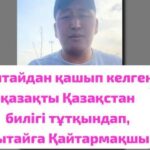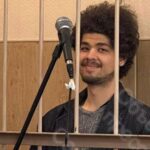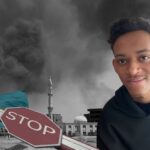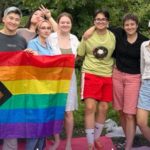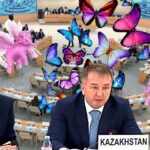Kazakh president Nursultan Nazarbayev has announced a moratorium on land code regulations that were due to take effect on 1 July this year. The regulations […] that “called forth a reaction from society” will be put on hold until 2017, the president said. At the same time, the national economy minister Erbolat Dosayev was dismissed and the agriculture minister Asylzhan Mamybekov reprimanded.
The “reaction from society” that the president mentioned was a wave of protest meetings, held without permission on the squares of Kazakh cities. Many hundreds of people attended, to protest against the sale of land or its lease to foreign leaseholders.
[Here is the time-line over which the movement unfolded:]
24 April. The first demonstration against land sales took place in Atyrau in western Kazakhstan [in the heart of the main oil-producing region]. No-one expected it – least of all two local activists, Max Bokayev and Talgat Ayan, who posted on Facebook that they would stage a picket at Isatay-Makhambet square, against the authorities’ plans to more than double the lengths of land leases to foreign entities. Two thousand people gave their support – not virtually, but by turning up to the square. I have never seen such numbers demonstrating in Kazakhstan – excluding, of course, events organised “from above” – even in “peaceful” times, let alone the period since Zhanaozen. [In December 2011, a six-month oil workers’ strike was brought to an end by a police attack on peaceful demonstrators that left at least 16 dead and 60 wounded. A crackdown on opposition organisations and media followed.]

The government of Kazakhstan had already, at the end of January, announced its plans to put up for sale new lots [of land]. The inclusion of “national parks” caused the biggest reaction. One thing led to another, and in April it became known that city parks, state medical institutions and city cemeteries could also go to private owners. But the most heated arguments were provoked by the government’s intention to put up for sale to its citizens, or lease to foreigners, on 1 July 2016, portions of agricultural land.
The idea is to raise funds to avoid any worries about a budget deficit, at least for next year. And there is something to worry about. Notwithstanding the fact that the tenge [the Kazakh currency] has stabilised after two devaluations, Kazakhstan continues to fall in international economic ratings. The Bank of America has listed our oil-dependent state as in danger of default.
The state’s only hope is an increase in the prices of oil and other natural resources [e.g. natural gas, copper and titanium] on which Kazakhstan has lived all these years, sometimes successfully selling off its natural riches to push the economy forward. But right after the first, relatively mild, wave of economic crisis in 2007-08, which put an end to the construction boom, it was clear: essentially, apart from mineral resources – in the first place, oil – and production of wheat, the country had nothing to boast about. It was only logical for the government to decide to put out the smouldering bonfire of economic disorder in the way it knew best – selling off something. And this time it was the land’s turn.
After an official survey in 2014-15 it was announced: 7.14 million hectares of usable land was not being used, and so it could be put in private hands – regardless of what the majority of the population thought. Previously, most people had turned a blind eye to such changes. Yes, it’s said that for Kazakhs the very idea of the land is sacred – but actually it depends on people’s material situation.
So during the relatively mild [economic] crisis of 2011, a meeting held with [the authorities’] permission in Alma-ata against Chinese expansion – and then it was a matter of the leasing of millions of hectares to China – attracted 200-250 people. And that was before the crackdown on the opposition. Today, the “Chinese question” is again on the order of the day. People believe that “foreign leaseholders” means in the first place our Chinese neighbours. It was no accident that in recent years China has given Kazakhstan billions of dollars worth of credit: it doesn’t have to be repaid in cash. Land would also do …
But more than this, the situation in Kazakhstan has completely changed. No consistent opposition movement – neither liberal, nor left-wing – has survived [after the repression of 2011-12]. But what political leaders failed to do all these years – get people out on the streets – has happened, thanks to the social and political circumstances.
“Right. No-one expected that number of participants”, Max Bokaev, the Atyrau activist, said. “I wrote on my [Facebook] page on the 20th, that I would go out on to the square to protest on the 24th. Formally, no-one was called on to join in. Before that, on the 14th, with my comrade Talgat Ayan I had submitted notification that we would hold a demonstration – knowing, of course, that the city administration would refuse.”
Before the demonstration in Atyrau, there had been two little-noticed protests in Astana [the capital city] and Uralsk. A few individuals had picketed, and the security forces had been extremely prim and proper, limiting themselves to detaining those who tried to argue when arrests were made. That was how things were expected to go in Atyrau – but when, half an hour after the time mentioned by Bokaev on social media, several thousand people had gathered, it was too late to disperse them. The authorities, in the shape of mayor Nurlybek Ozhayev, actually came and spoke to people.
It ended surprisingly peacefully. Speakers addressed the crowd, people talked to each other. After the four-hour demonstration there was nothing left on the square, not even any litter. The mayor promised that there would be no repressive measures taken against participants, including those who had spoken.
On the same day, a demonstration of about a hundred people passed off peacefully at Kulsary, a small town in Atyrau region.

The mayor of Atyrau kept his word – partially. No repressive measures were taken against specific people. But the next day a criminal case was opened under the slippery clause [of the penal code] on the “incitement to social, inter-ethnic, religious and other discord”. [Zhanaozen strikers were jailed in 2012 under this clause.]
There have been rumours that the demonstrations in western Kazakhstan might have been inspired by someone from the president’s inner circle who came from that region and had been pushed out of power. That is denied by Max Bokayev, who says that the oil-producing region faces a pile of problems. Some of these are related to the fact that the fields are being worked by operators in which Kazakhstan has a stake of less than 20%, and who are disdainful towards the local workforce. There have regularly been fights, some quite serious, between Kazakh workers on one side and Turkish and Chinese workers on the other.
25 April. A day after the [Atyrau] demonstration, […] president Nazarbayev [in a speech] first congratulated the population for taking an interest in the land question, and then warned: “There is no justification for speculation on this issue. Provocateurs must be unmasked and punished under the law of the land.”
26 April. There were two small pickets – in Aktobe [in western Kazakhstan and Alma-ata [the largest city, in the south-east] – also without consequences [in terms of arrests, etc] for the participants.
27 April. Two further meetings. One, in Aktobe, brought together about 1,500 people; the other, at Semipalatinsk in the east was about a quarter of the size. In both cases, the local political leaders went and spoke to the crowd. In Aktobe, the mayor was greeted with whistling. And then some demonstrators proposed, not in the most polite way, that the president, the “leader of the nation”, should think about quitting.

This resulted in a change in the authorities’ attitude to the demonstrators. The next morning, the security services went round the town picking up demonstrators and bloggers. […] Warnings were handed out in the form of “a little rap on the knuckles”. The film director Marat Teleuov was questioned over eight hours by three agencies; others were put before the administrative court and fined around $120-130 each. […]
29 April. The next round of incidents showed how the authorities’ attitude had taken a 180 degrees turn, in three cities:
In Alma-ata, a group of activists and opposition journalists planned to announce at the press club a protest event about the land issue on 7th May. [But two of them were arrested on the way, and the rest detained at the entrance to the press club. They were all held for about three hours and then released without charge.]
In Uralsk – where de facto, in contrast to the rest of Kazakhstan, people have been able to organise unauthorised demonstrations with a handful of participants – a lone picket was detained before he could even uncover his placard.
In Aktau, near Atyrau, about a hundred people tried to gather on Yntymak square. [The police quickly warned them in no uncertain terms to disperse, and they did.]
1 May. Kazakhstan has its own holiday on 1st May – the Day of National Unity. President Nazarbayev, unusually, decided himself to address people in Alma-ata, which he hadn’t done since 2004. [A carefully-screened crowd was assembled to hear him, and the event passed off quietly.] But in the evening, in the busy area around the central mosque, a spontaneous demonstration took place, although it was not clear how it started or ended. Judging by videos [that appeared on social media] the police tried to disperse the demonstrators without making arrests – which was hard, since they had trouble distinguishing the participants from passers-by.
But from commentary on social media it became clear that real anger was provoked by news of the break-up of a demonstration in Kyzylorda, a town where nothing [in terms of social movements] has happened for a long time – and photos that circulated allegedly showing someone killed [by the security forces]. The photo was obviously faked. But the police action, although not especially fanatical, really did happen. On the central square several hundred people had gathered not to celebrate national unity but to protest over the land issue. Judging by the heavy presence of police and, apparently, troops, the local authorities were well prepared for this turn of events.
But what really worried the authorities on 1 May was the demonstration called in Zhanaozen, in Mangystau region [where the long-running oil strike, and killing of demonstrators, took place in 2011]. Despite warnings, and journalists being barred from the town, several hundred people gathered on Yntymak square, now remembered as the place where demonstrating oil workers were shot down. Here, in contrast to Kyzylorda and Aktau, the armed security forces were nowhere to be seen, and the police began to close ranks when the demonstrators started openly to demand an end to land sales. But it was the mayor, not the police, who approached the demonstrators.
The two sides did not agree, but there was a short exchange of views. And the crowd demanded the release of several people who had been arrested that morning – and it appears that that was achieved.
That’s how the first wave of demonstrations ended.
From 2 May. The authorities collected their wits – and went on a counter-offensive. Across the whole country they started rounding people up and clamping down on the slightest attempt not only to demonstrate, but even to discuss doing so on line. Reports of arrests and “preventive” interviews came in from all around – from Astana, Chymkent, Alma-ata, Pavlodar. In Aktyubinsk people trying to picket in ones and twos were dealt with very brutally.
On social media calls for a nationwide demonstration on the land question on 21 May grew louder and louder. But the question came up: who would organise it? No active opposition remains in Kazakhstan, and the two [legal] parties considered to be oppositional – the Communist People’s Party of Kazakhstan and the All-national Social Democrats – while having carefully noted their opposition to land sales, would in no way be prepared to organise a demonstration, unless it was sanctioned from the highest level of government.
Apart from psychological, and in some places physical, pressure on well-known activists, the authorities resorted to an experiment in Putin-style propaganda. [National state TV aired a programme, “Revolution for export”, claiming that demonstrators had been paid $50-150 to turn out on the land issue, that there was a parallel with the Arab spring, and that the USA, through human rights organisations, was trying to destabilise Kazakhstan.]
4 May. In Uralsk there was an unauthorised gathering of about 200 people. The demands were the same ones. The square was quickly blocked off by the police, who prevented other people who were arriving from joining those who were demonstrating. Behind the offices of Nur-Otan, the presidential political party, were three buses full of soldiers. Nevertheless, once again, the leaders of the local administration went down to the demonstrators and asked them to come inside to discuss their demands.
5 May. [President Nazarbayev’s climb-down: a striking achievement for the demonstrators.]
Bear in mind that this is not just about foreign [leaseholders of land] – people are quite justifiably concerned also about domestic latifundistas. If you look at who owns the best land, especially near to large towns, you can see that among the landowners are procurators, judges, officials of all types, parliamentarians, party functionaries, the president’s relatives – that is, people who have nothing to do with agriculture. And all this while peasants, who are far from the richest people, are unable to get anywhere near.
Makhambet Abzhan, president of the Astana-based community organisation Shanyrak, which works on problems facing landless and homeless citizens, tried to apply for a 1000-square-metre plot of land – which each citizen is guaranteed under Kazakh law – near the capital. He applied to the Astana land committee. “They told me I am in the queue, number 60,000-and-something”, Abzhan said.
Having worked out that in this life he would never see in black and white his right to use his plot, Makhambet travelled around the region, starting with villages thirty kilometres from the city. Success smiled on him at seventy kilometres’ distance, “although I lost time, and frayed nerves, because at the district mayor’s office they didn’t want to hand over the land”. A threat to go to the procurator shook things up, and Makhambet, a young father of three, became the conditional owner of 1000 square metres. Why conditional? “Because I got the land not as private property, but on a three-year lease with an extension”, Abzhan explained. To acquire land as your property, you need to take over it, put up a dwelling and register it. And fulfil other requirements with regard to infrastructure.
An old comrade of mine […] characterised the land movement in this way: “People have just had enough.” That probably explains just about everything.








